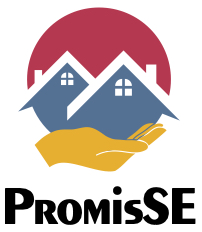***IMPORTANT NOTE***
At the time of this writing (6/21/22), the Advanced Reporting Tool (ART) is scheduled to be replaced by an updated version of SAP Business Objects. While the new system may bear similarities to the old system, the directions on this page may become obsolete as the newer system is rolled out and used within ServicePoint.

7-10 Minutes

What is ART?
ART stands for Advanced Reporting Tool and uses a Business Objects platform. It allows end users to view, schedule, analyze reports and program data.
Canned vs ART
Canned reports are prebuilt reports by Bowman but they are not run in the BO platform, meaning that some levels of end-users who do not have an ARTV license can access and run these reports. Also, canned reports do not require an overnight update of the system to report on the most current data, as does ART.
Navigating ART
You can access ART by going to the Navigation bar on the left section of the screen, finding and selecting Reports. You will be taken to the Reports screen in ServicePoint. ART can be found at the bottom of the screen.
Once in ART, users will see the ART browser field at the top, and the Scheduled Reports field at the bottom. The ART browser field contains the users Inbox, Favorites, Available Reports and Templates, Bowman Systems Resources, and the Public Folder, where applicable ART reports and manuals are stored. The Scheduled Reports field at the bottom will keep a list of scheduled reports and their running status.
Inbox
Your inbox will display your scheduled reports. Reports in your Inbox will remain until you delete them. While scheduling the report, you can also send the report to another user’s inbox (if they have an ART V license).
Available Reports and Templates
In this folder you will find all of the ART Gallery Report Manuals, as well as the ART Gallery Index.
- ART Gallery Report Manuals
Found in the Available Reports and Templates folder then then to the ART Gallery Report Manuals. The ART Report Manual folder contains explanations and technotes for each report found in the ART Gallery folder. Report Manuals are coded by the same number and name as the reports themselves.
- ART Gallery Index
The ART Gallery Index (your printout) can be found under the Available Reports and Templates folder. You will see this as a free standing document with a spyglass icon next to it. To view/print select the spyglass. This document provides a list and synopsis of the available ART reports.
Bowman Systems Resources
In this folder you will find documents published by Bowman Systems.
Public Folder
In this folder you will find many folders used by other participating agencies throughout the PromisSE. You will only need to access the ART Gallery Reports and Resources folder.
- ART Gallery Reports and Resources
In this folder you will be able to access the ART Gallery Reports, as well as, the ART Gallery Index.
- ART Gallery Reports
Found in the Public Folder, and then by selecting the ART Gallery Reports and Resources, the ART Gallery Reports folder can be expanded to view all available ART reports. Each report has a corresponding number, listed in numerical order. To navigate through the folder, use the FIRT, PREVIOUS, NEXT & LAST buttons found at the bottom.
Using EDA
You must use the EDA to enforce the visibility and parameters set for the program you wish to run the report on. If you do not select the EDA, the report will default the parameters for the provider the user was created under.
Exporting and Printing
To export a report, select the down arrow next to the Documents button at the top-left on the toolbar. Hover over the Save to my computer as button and select the format you wish to export in. You can export and save as a PDF, Excel, or CSV doc.
CSV – comma separated values – It’s the standard file type to transfer data to other systems. You can open it in excel because excel can read CSV. You can manipulate data in a CSV file, but not in PDF and not easily in excel. The field names are those used in the syntax, as it is raw data.
*CSV caveats – there are size limits depending on the version of excel you are using.
Right now, ServicePoint defaults to an older versions which only allows 6,000 rows.
ServicePoint has designed the report to move the extra data to another tab, if over 6,000 rows.
*Calculations are saved as answers in excel and CSV, so they are no longer live. *Cell groupings make it difficult if you are trying to format your report to look like the final report from ART
*CSV will de-truncate data, such as identifying client info, so be aware before sharing data. To print, select the printer icon button on the toolbar.
ART Java Applet runtime settings & Popups
Pop-up blockers may prevent exporting. Make sure that your settings allow popups from this page.

Step by Step Instructions for Scheduling an ART Report. (252 Data Quality Report as Example)
- Reports
- ART
- Public Folder
- ART Gallery Reports and Resources
- ART Gallery Reports
- Select the Spy Glass next to the 0252 ART report.
- Schedule Report
- The first prompt “EDA Provider” in the prompt window will be highlighted. You DO NOT need to change this from “-Default Provider-“
- Click on the next prompt, “Select Provider(s)”
- Click “Select”
- Once all provider load, you can search for the desired provider in the search bar. You can search by typing in the providers name or provider ID number. c. Click search
- When the provider appears in the search results, click on the green plus sign to add it to the queue.
- For the 252, you can add multiple providers to the queue.
- Once you’ve finished adding all desired providers, make sure you remove “None Selected” from the queue by clicking on the red minus sign to the left. If you leave this prompt in the queue, it will negate all other providers and the report will be blank.
- Click Submit
- Click on the next prompt, “Enter Start Date”
- Enter the beginning date in the date field.
- Enter the time that your project uses to create Program Entry’s. If entering multiple providers with different Program entry times, use the earliest time. c. Click Next
- Click on the next prompt, “Enter End Date Plus 1”
- Enter the end date of the reporting period in the date field.
- Enter the time that your project uses to create Program Exits. If entering multiple providers with different Program Exit times, use the latest time.
- Click Next
- Click the next prompt, “Include Service Transactions in Report Card?” a. Click Select
- Wait while the search results load
- Select Yes or No by clicking the green plus sign to the left of the correct answer.
- By selecting “yes”, the report will include all services (meals, transportation, etc.) that were created for each client enrolled in the program during the selected reporting range. It will also show a null value for those client’s without a service entered during the reporting range. Null values will lower your overall data quality score. This prompt is optional. You may select “no” if your program is not required to enter Services for clients.
- Click Submit
- Once all prompts are answered, click Next.
- You have the option to change the name of the report, if you wish.
- Choose the Report Format (PDF or Excel)
- Users Inbox will be automatically set to the user creating the report.
- If you wish to send a copy of the report to someone else, you can do so by clicking “Search”. Type in the users name in the inbox. (FYI – you can only send a report to a user with an ART report and with the same user access level as yourself)
- Click green plus sign next to the user you are sending the report to
- Interval should equal “Once”
- Start and End Date and Time should remain as what is automatically populated. Don’t change anything here.
- Click Send
- Scroll to the bottom of the page and click “Refresh” in the bottom right corner of the screen.
- Wait for the report to say complete. You may have to wait anywhere from 5 – 20 minutes.
- Once the report is complete, click on the Spy Glass.
- Click “Download”.
- You can now open the report to view the data.
